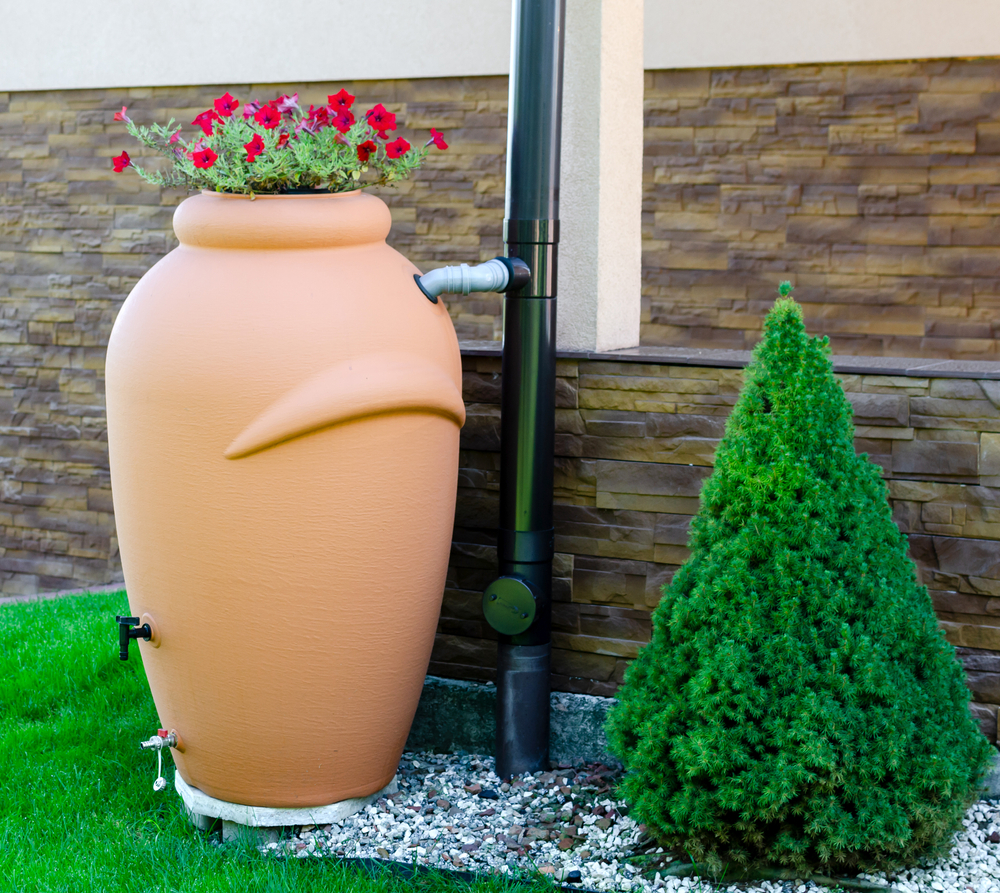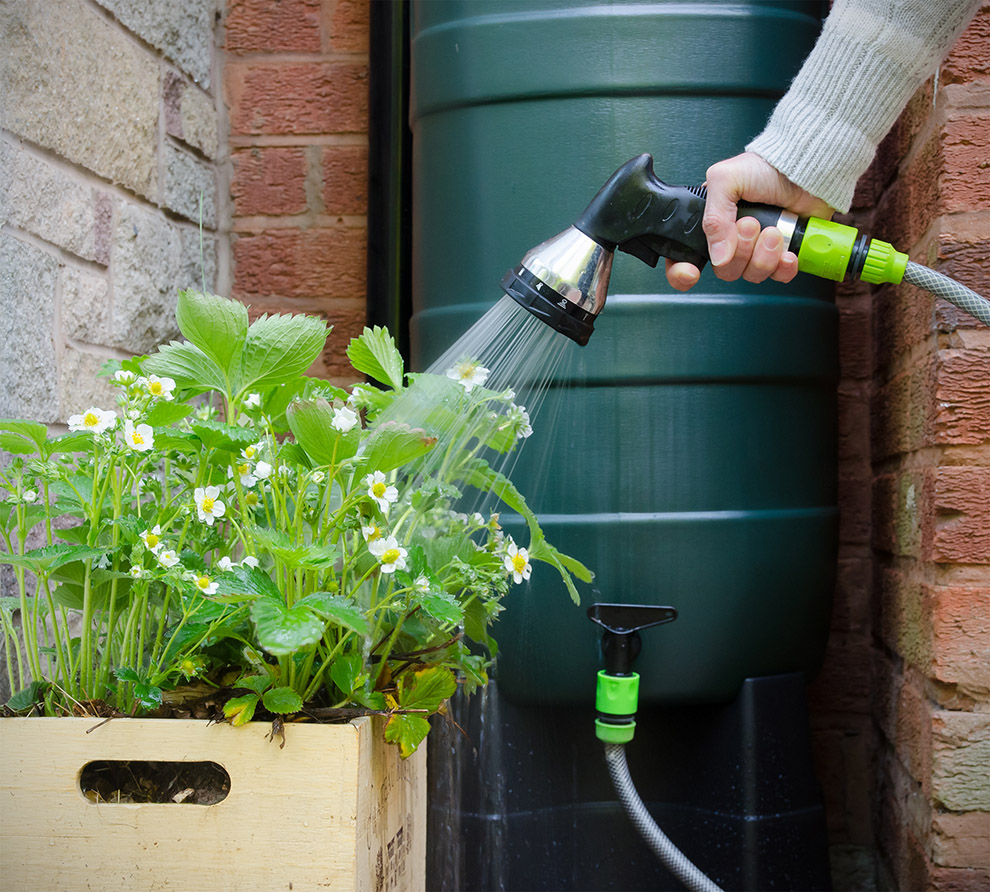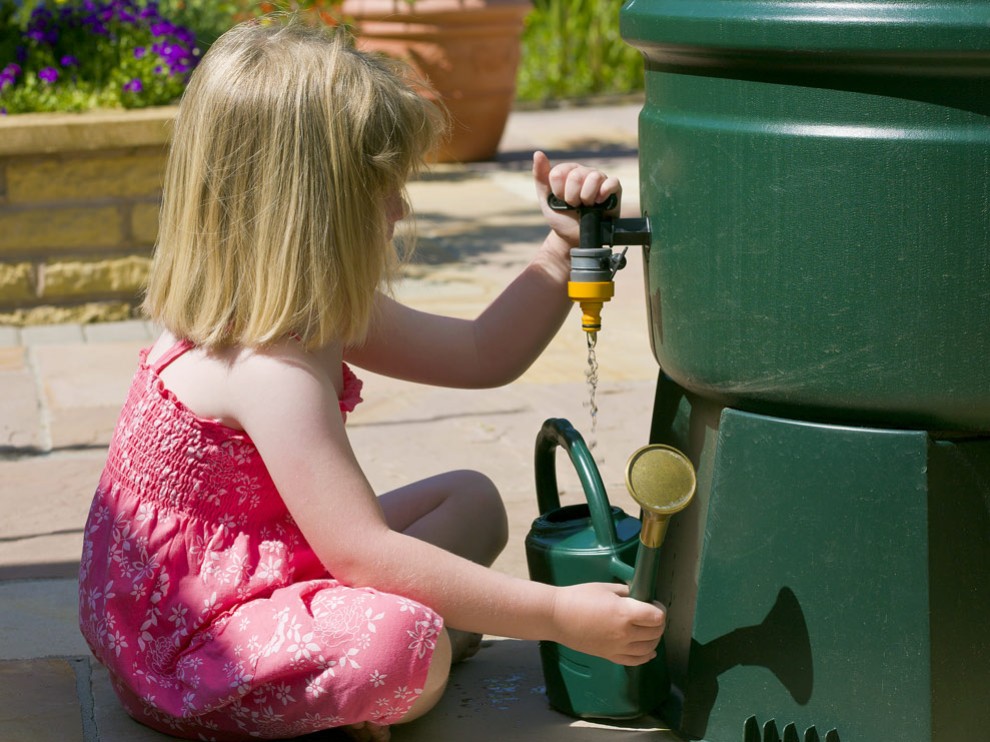RAIN BARRELS
Did you know that we get an average of 20 inches of rain per year in Lincoln? And that 1,000 square feet of roof surface can capture about 300 gallons of water for every 0.5 inch of rainfall?
Given that the average household in America uses at least 48 gallons of water a year for watering lawns and gardens, the water collected in a rain barrel could go a long way!
Rain barrels can be used at your home to help collect rainwater that can then be used on landscaping and are a simple way to reduce the amount of pollution that enters our waterways! So, what is a rain barrel?
- Rain barrels are large storage containers that capture rainwater runoff from your roof and rain gutters and store it for future use.
- Rain barrels come in a variety of shapes, sizes, material, and designs to match your needs and aesthetic of your home.
- Important components of a rain barrel include screening that keeps mosquitos from breeding and other insects out of the water and an overflow mechanism to release excess rainwater if the barrel fills up.
- To purchase a rain barrel, check out your local hardware store or their online website.
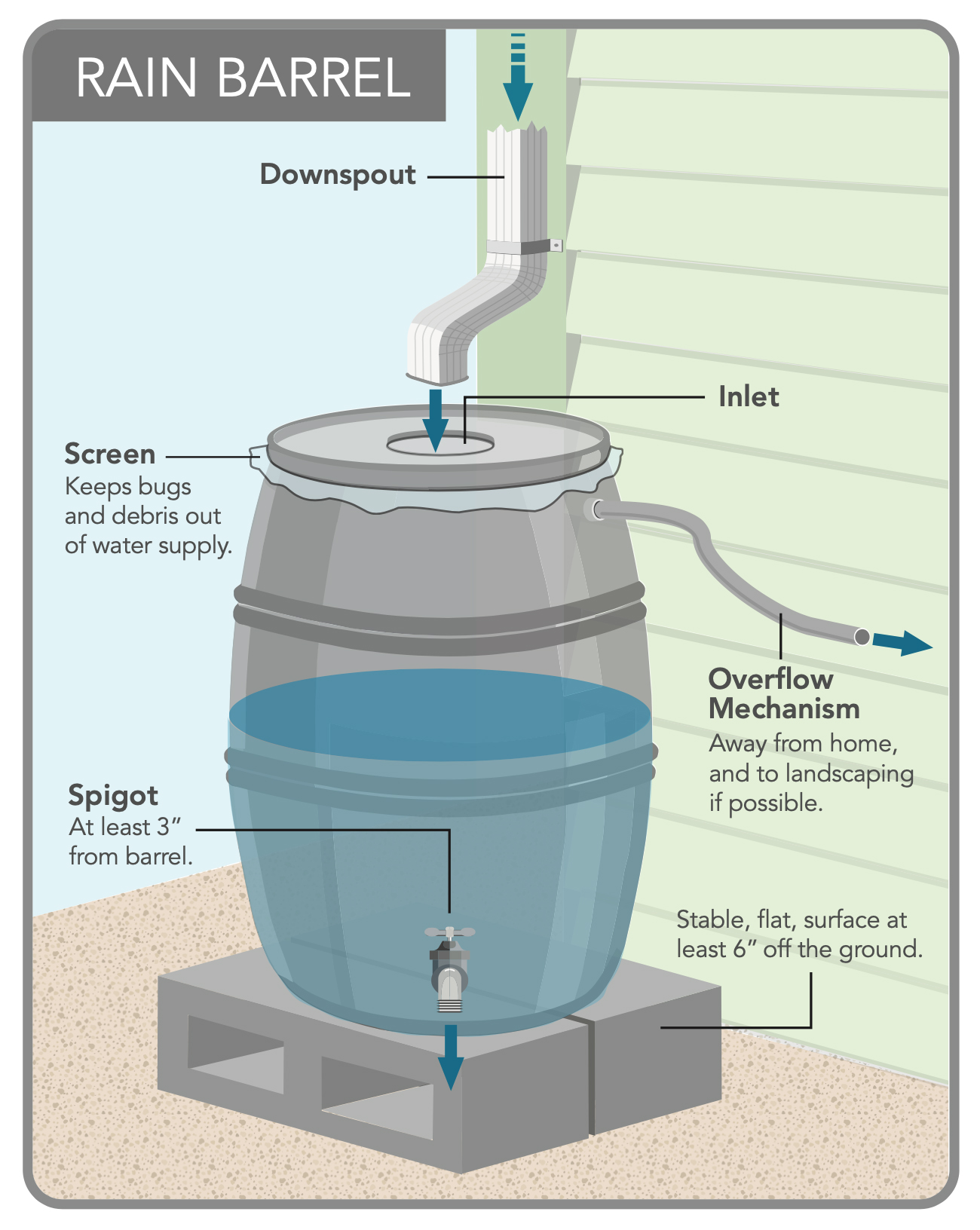
Image courtesy of the City of Palo Alto Stormwater Program
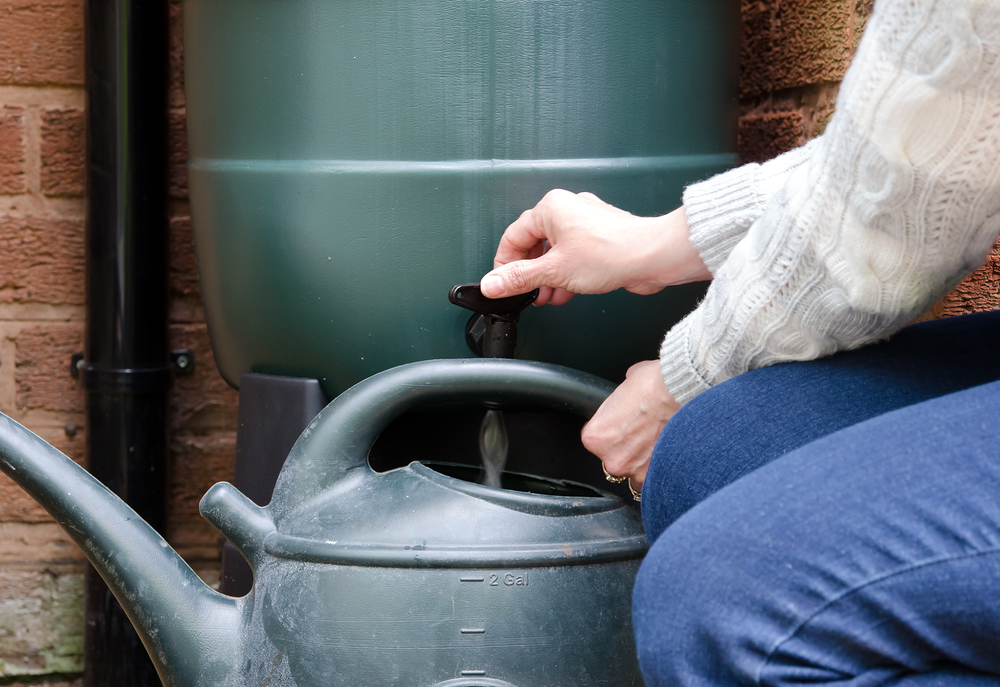
Rain Barrel Benefits
Using rain barrels at your home can be beneficial to you, your property, and the environment. Rain barrels:
- Save water. Using the rainwater that we capture ourselves for landscaping allows for savings on the monthly water bills.
- Moderate flooding. Rain barrels can help moderate the potential for flooding on your property and in your neighborhood during the rainy season by reducing the amount of water that leaves the property.
- Prevent stormwater pollution. By collecting rainwater onsite, rain barrels can help keep pollutants from draining into our waterways. Read more about how rain barrels prevent water pollution below.
- Make your garden thrive. Rain barrels collect rainwater, which is free of the additives (such as fluoride, salts, and inorganic ions) that tap water has for sanitation. Over time, these compounds accumulate in the soil and can harm plant roots and microorganisms in the soil. Your plants and garden will thrive by being watered with rainwater.
Rain Barrel FAQs
The City of Lincoln Stormwater Program recently had a poll in its monthly newsletter regarding rain barrels. A summary of the questions/comments received and answers are provided below – we’ll add to this list whenever we receive questions about rain barrels. Do you have a question about rain barrels? Submit your question here.
Unfortunately, the City of Lincoln isn’t currently able to provide financial incentives or rebates at this time. If this changes in the future, we will announce it in our e-newsletter, so make sure you subscribe!
Rain barrels help reduce pollution by collecting rainwater before it leaves the property. This rainwater would otherwise flow off of the roof, onto the property and travel across yards, driveways, and sidewalks where it can then come into contact with and transport pollutants such as pesticides, trash, pet waste, and/or automobile oil to the storm drain – which then flows into our local waterways.
Rain barrels can be purchased from a variety of local hardware stores (typically via their online website), or through online retailers. Rain barrels come in different shapes, sizes, and materials. It’s important to select one based on your needs and aesthetic preferences.
We recommend asking the vendor you’re purchasing your rain barrel from if they have any local resources for installation instruction and/or assistance.
There are many inventive ways that people have used so that their rain barrel(s) enhance the look of their home! See below for some inspirational photos:
In the state of California, it is required that the input and overflow of your rain barrel have a screen or a mesh to keep out larger particulates and bugs, including mosquitos. The screen pops out, so it is easy to clean. Some barrels will also already have a mesh over the input hole. A fully enclosed barrel without removable pieces can also help avoid mosquito and other bug infestations or breeding.
The City of Lincoln gets an average of 20 inches of rain per year, typically from mid October to mid April. With a rain barrel, 1,000 square feet of roof surface can capture about 300 gallons of water for every 0.5 inch of rainfall – especially for the dry months! The larger your rain barrel system capacity, the more rainwater you can capture, store, and then use during the dry months.
Rainwater collected within a rain barrel can be used in a variety of different ways, including through:
- Drip irrigation (on a timer or manual)
- Low pressure hose
- Watering cans
The rainwater that is collected within the rain barrel can be used to water outdoor gardens or indoor plants, in a bird bath or to wash a pet or vehicle (follow our guidelines for washing pets and vehicles). It can also be slowly discharged into pervious surfaces (such as a landscape bed or your lawn) to help recharge groundwater during dry weather. Some larger systems can also be connected to your home for non-potable usage such as flushing toilets, however that would require a City permit.
Yes. If you want more than one rain barrel on a single downspout, we refer to this as daisy-chaining, meaning that the barrels are connected. In addition, a rain barrel can be installed at each downspout off of the roof. Benefits of multiple rain barrels are that they:
- Allow for larger systems so that they collect and store more water
- Create better pressure for watering
- Add distance to help reach your garden easier
Another way to increase system capacity is to install a cistern (rain barrels over 200 gallons). Whether you opt for a rain barrel at each downspout, a daisy-chained rain barrel system at a single downspout or a single larger cistern option will depend on a number of factors, including the space you have available.
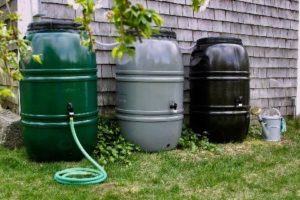
Lincoln’s Rain Barrel Community
Because of all the benefits of rain barrels and how many residents have installed them, there is a growing rain barrel community in Lincoln. If you install a rain barrel or multiple rain barrels at your home this year, we want to hear from you! Tell us about why you installed your rain barrel(s) and send us your rain barrel photos through our contact form.

The personal information below will not be shared. Experiences with and photos of rain barrels will not be shared without permission.


